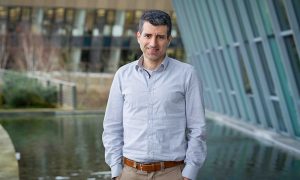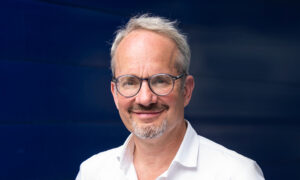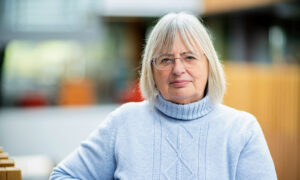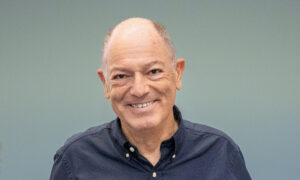
We are EMBL: Amandine Nunes-Jorge on supporting ocean research
The Project Manager combines passion and scientific experience to support ocean research within BIOcean5D, a European Commission, SERI, and UKRI co-funded project of 31 partners.
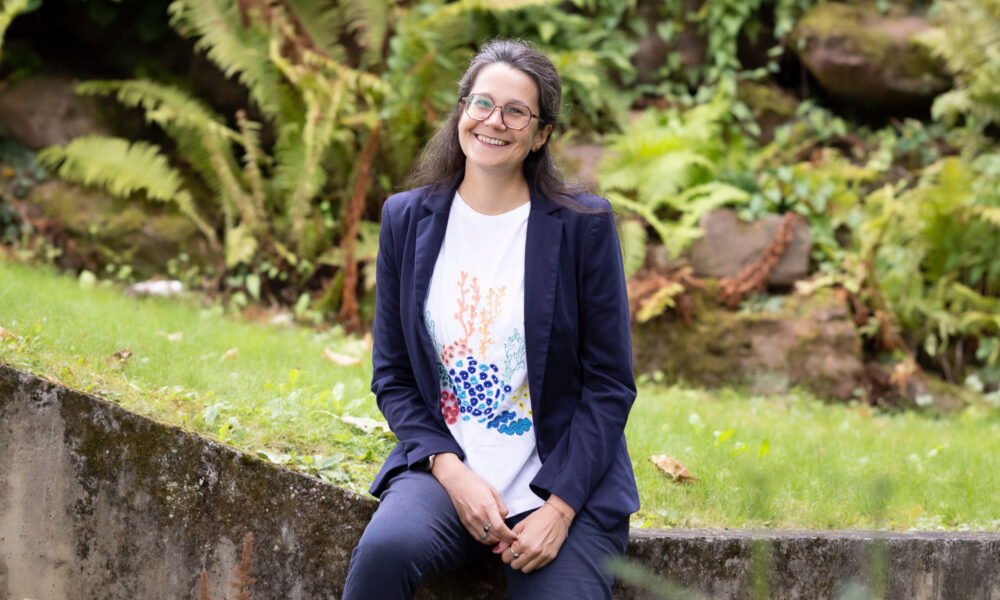
Spending time near the ocean has its advantages. For Amandine Nunes-Jorge, it sparked a curiosity so strong and obvious that she moved into specialised training right after high school, to fuel her exploration of broader (and deeper!) marine environments.
Inspired by oceanographic documentaries in the ‘90s, Jacques Cousteau’s expeditions, and learning about deep-sea ecosystems, Nunes-Jorge spent more than 10 years studying marine ecosystems in France, Germany, and Japan. Specifically, she worked on hydrothermal vents (also known as ‘black smokers’), mud volcanoes, and organic falls – all chemosynthetic ecosystems that rely on chemical components as a primary energy source, instead of light. She studied these ecosystems using traditional ecology methods and contributed to the development of a molecular biology method to identify small organisms using molecular probes and in situ hybridisation.
After exploring the world’s oceans, Nunes-Jorge is now using her experience and knowledge to support others in achieving the same goals. Today, she is BIOcean5D’s project manager at EMBL, witnessing the wealth of information emanating from the TREC and BIOcean5D projects.
We caught up with Nunes-Jorge to learn about the connections between the TREC and BIOcean5D projects, her insights, and her hopes for this work.
Tell me about BIOcean5D and its relationship to TREC.
Without TREC, there would be no BIOcean5D. TREC is one of the main pillars of BIOcean5D. It brings us a collection of samples and data never seen before, and studies in both projects are very intertwined. BIOcean5D complements TREC by adding ‘time’ and ‘human-impact’ components. For example, it includes a study of long-term time series from European marine labs that go back 10+ years, paleocores that provide environmental and biodiversity data going back to pre-industrial times, and seasonal land-to-sea gradients that compare pristine and environments impacted by human activities.
BIOcean5D scientists also study specific marine ecosystems, such as marine forests, coral reefs, and the deep sea. BIOcean5D integrates all these data to create new knowledge and to feed models and theories that help us understand the evolution of marine biodiversity’s constituents (at taxonomic and functional levels) and the drivers of biodiversity changes. Equally important, our social sciences and humanities researchers look at how the general population understands and values ecosystem services provided by marine ecosystems, organisms, and plankton, and how this acquired knowledge can influence policy-making.
What are the five ‘D’s in BIOcean5D?
The five dimensions we’re referring to are: the three dimensions (3D) of space, along with time and human impact. Together, they enable BIOcean5D to form a holistic vision of the ocean. Until now, we’ve only peered at biodiversity through selected lenses. Not every aspect in BIOcean5D is examined through all lenses, but combined together, the components enable an integrated vision to be formed. Examining both the distant past and the most recent period helps identify drivers of change and the impact of human activities on ecosystems, which can then be incorporated into newly developed and legacy models and theories to predict biodiversity changes and evaluate scenarios.
In turn, these results offer information to guide evidence-based decision-making. Involving the general public through citizen science projects, educational outreach, panel discussions, and surveys also builds awareness and knowledge necessary to trigger changes at the citizen and governance levels.
How did you get involved with BIOcean5D?
When I heard of the project, I realised a lot of the activities were topics I had studied, so I thought I’d have a good understanding of the project. Its content and aims really resonated with my background and values. The fact that the main partners were French and German also aligned well. At the time, I had been looking to manage a European project exactly like this one, so it just felt natural to apply. I am grateful to all who made my involvement possible.
What has been most rewarding?
My most important milestone has been our first major periodic report, released last year, which described the work performed over the first 18 months of the project to the European Commission. It was a huge endeavour with significant coordination from our scientists and contributors. Without their responsiveness and commitment, it wouldn’t have come together. And I was glad I could play my role, supporting them and keeping things moving! On a more personal level, I took pride in managing the financial aspects in parallel – a real challenge, but a very satisfying one.
Additionally, I especially like providing guidance and helping my colleagues when they request information, finding the answers they seek and reformulating the EC admin jargon into more understandable language. I can ensure they have the time and space to focus on the science and that the project runs as smoothly as possible. The fact that they are kind and grateful for my efforts is very rewarding, too.
What BIOcean5D impacts do you most look forward to?
I was really excited to see the results from a study submitted last year where colleagues at the Helmholtz-Centre for Environmental Research used workshops and panels to show the differences in how people who live inland or near the coast perceive the role of plankton (e.g., producing oxygen, enabling ecotourism, serving as a food source for commercial fish species, etc.). Although I’m not a social scientist and, as such, my understanding was limited, I thought the findings were surprisingly insightful – a testament to how clearly my colleagues communicated their work, even to non-specialists like me!
Colleagues in Norway (NORCE) and Poland (IOPAN) also recently presented their use cases in salmon aquaculture and the oil and gas industry, where environmental DNA complemented traditional taxonomic methods to evaluate the impact of human activities – also an interesting read!
The data collected during the first half of the project is now becoming available to the biologists and modellers involved in the project for study, and it will be exciting to see what the biodiversity analyses reveal – especially insights from data from over 100 years ago and the human, biological, and environmental factors involved. Given my background, I’m also looking forward to the results of studies on fragile ecosystems like the deep sea.
On a more personal level, when did you first get interested in ecology or science?
I think I always knew. I’ve always been very interested in biology, and, growing up, I spent a lot of time close to the sea. I was very curious and loved snorkelling – discovering and exploring everything below the waves. In high school, marine biology became such an obvious passion and serious interest that I chose to attend a specialised oceanography school afterwards, which is where I decided to study deep-sea ecosystems. After 10 years of realising that dream and participating in scientific cruises – with some unexpected detours along the way – I found other ways to contribute to the field, and here I am!
What do you like to do in your free time?
I’m in constant contact with colleagues during my working hours, even at a distance, so I like to balance that with quiet, calm activities that recharge my batteries during my free time. You’ll usually find me at home, reading a book, doing arts and crafts, playing board games with friends, or in summer, gliding on my stand-up paddleboard.
If you could invite three famous people for a glass of wine, who would they be?
Françoise Gaill, the marine biologist who was on one of the first expeditions that saw the discovery of hydrothermal vents in the Pacific – I owe so much to her, and I’d like to thank her. I’d like to talk with movie director James Cameron because of his passion for cinema and oceanography, as well as his inventions for exploring and filming. He’s a real scientist at heart. And if I’m allowed a fictional guest, I’d invite Jo March from the novel Little Women because she provided a personal revelation when I first encountered her.
BIOcean5D is co-funded by the European Union (GA#101059915), SERI, and UKRI. Views and opinions expressed are, however, those of Nunes-Jorge only and do not necessarily reflect those of the European Union. Neither the European Union nor the granting authority can be held responsible for them.
